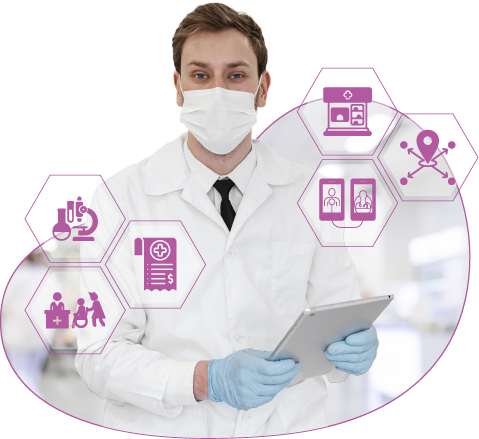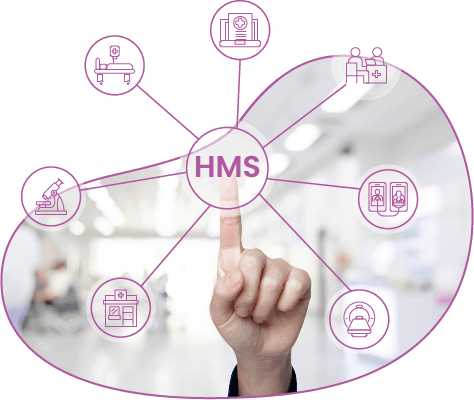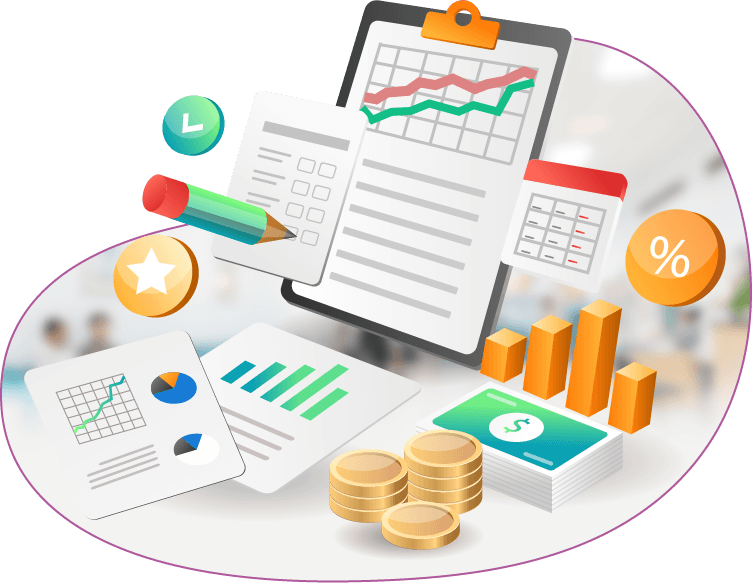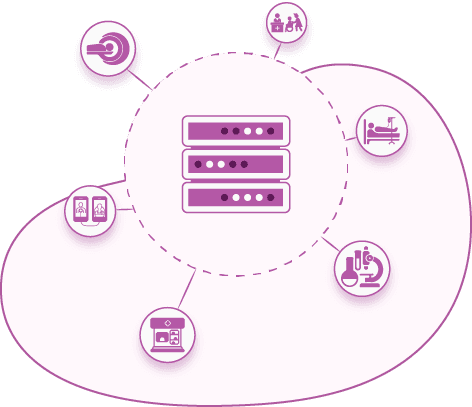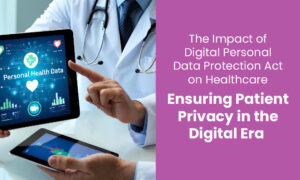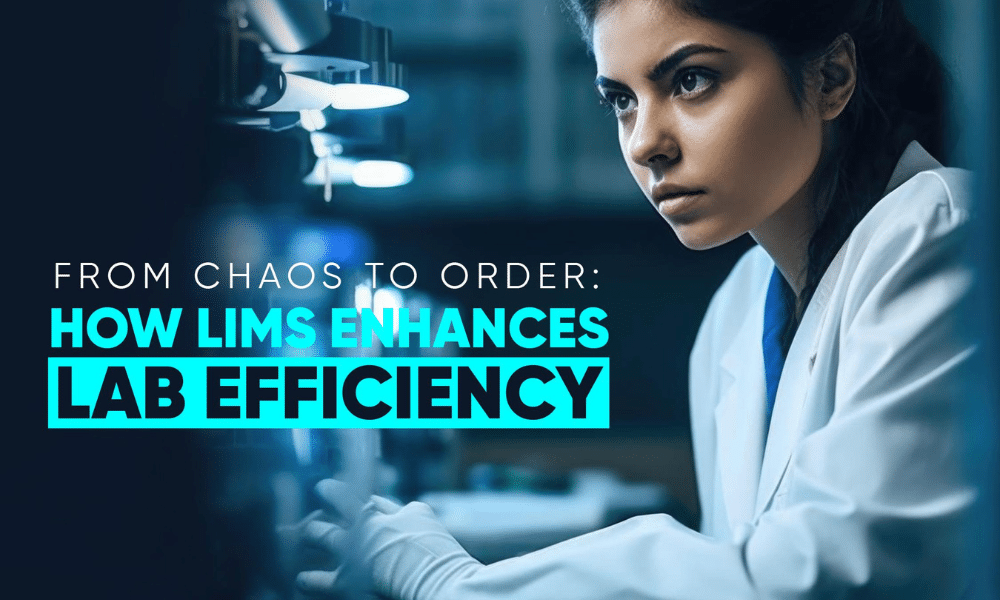
Labs today face numerous challenges that prevent them from providing a better experience to their customers. These challenges include workflow, sample and data management, inventory management, compliance, and documentation. Additionally, labs struggle with uncontrolled expenses, slow turnaround times, and inaccurate service delivery, all of which impact their revenue.
To address these issues, LIMS laboratory information management plays a crucial role in streamlining and improving lab efficiency. By implementing LIMS laboratory information management, labs can create a more organized and productive working environment for both staff and customers. It is essential to identify and resolve major roadblocks for smooth lab management, leading to enhanced business outcomes and a convenient user experience.
This article will highlight the most common problems encountered in laboratories and provide solutions to overcome them.
Challenge 1: Managing Lab Information The Traditional Way
Switching to lab automation enables you to record & store all laboratory information in a digital format delivering streamlined and end-to-end management throughout operations. Lab automation fosters a seamless workflow by automating routine tasks such as sample tracking, data entry, and reporting. This not only saves time but also allows laboratory staff to focus on more complex and value-added activities, thereby enhancing overall productivity. The shift to lab automation not only revolutionizes data management but also optimizes the entire laboratory ecosystem, making it more efficient, accurate, and responsive to the dynamic demands of modern scientific endeavors.
Read more: Comparison Between SaaS and On-Premise Services in Healthcare IT Solutions

Challenge 2: Managing turnaround time.
Effectively managing turnaround time remains a persistent challenge for laboratories of all sizes. Pathology centers, heavily reliant on third-party processing units, often face extended periods for delivering test results to customers, leading to increased overall waiting times for patients. Additionally, labs grapple with the lack of a precise method for tracking samples and measuring Turnaround Time (TAT).
A viable solution to enhance turnaround time is the implementation of a Lab Information Management System (LIMS). LIMS laboratory information management systems offer a comprehensive approach by enabling continuous tracking and monitoring of pre-analytical, analytical, and post-analytical turnaround times for each conducted test. Beyond this, they facilitate the swift delivery of digital test reports to patients via SMS, emails, or mobile apps. The deployment of these LIMS solutions not only addresses various laboratory challenges but also results in significant savings in logistics time, ultimately ensuring a seamless and efficient patient experience.
Challenge 2: Accounting End-of-Day Balances
The task of producing accurate day-closing reports becomes cumbersome when financial records are scattered across paper documents or disorganized Excel sheets. This challenge is particularly pronounced for multi-centered labs, where generating a daily collection report entails increased time and additional costs. The reliance on manual processes also introduces the risk of human errors, leading to heightened lab inventory leaks and untraceable business losses.
Solution: A practical remedy lies in acquiring lab management software that specializes in precise day-to-day finance management across multiple lab centers. This software provides a consolidated view of end-of-day balances, meticulously accounts for various financial inflows, and updates users on any financial upgrades implemented across all centers with a simple tap. The data-driven resource allocation not only prevents leakages but also contributes to more effective finance.
Challenge 4: Efficient Daily Stock Management
Navigating the intricacies of daily stock management poses a significant challenge. Lack of precision in tracking usage, wastage, and expired stock creates an ongoing revenue gap that proves difficult to identify. Managing hazardous materials and addressing operational gaps is crucial for maintaining a smooth workflow.
Solution: Implementing inventory management software offers an effective solution for handling stock and monitoring its current status. Ezovion Lab software not only reduces the workload on staff but also features notifications about upcoming lab inventory purchase dates, effectively addressing previously unmanageable leakages.
Challenge 5: Streamlining Sample Handling
Sample tracking and handling constitute critical processes in lab operations, especially when dealing with a high daily volume. The struggle intensifies when managing samples received or sent from third-party customers, significantly impacting service quality and causing delays in patients’ medical reports. Access to accurate data is essential for quality assurance.
Solution: To address the complexities of sample tracking and handling, adopting a comprehensive LIMS laboratory information management proves instrumental. LIMS serves as a centralized hub, seamlessly integrating various aspects of sample management. With solutions such as Barcode Integration, Data Analytics, Patient Notification System-LIMS laboratory information management not only streamlines sample tracking and handling but also elevates the overall efficiency and reliability of laboratory operations.
Challenge 6: Confidentiality and Sharing of Data
Insufficient staff to manage operations often leads to inconsistent sharing and management of confidential information among pathology units. Common issues, such as a lab technician approving patient results in the absence of a signing doctor, can compromise lab safety and reputation due to errors from an unskilled workforce.
Solution:
To address staffing and information security challenges in pathology units, adopting a cloud-based Laboratory Information Management System (LIMS laboratory information management) with advanced controls is crucial. This system ensures secure access, prevents unauthorized approval of patient results, and enhances overall data security. LIMS also includes features like audit trails, encrypted data transmission, and proactive alerts for added confidentiality. Vendor-provided training helps bridge skill gaps among staff, ensuring proficiency and reducing errors. This approach not only strengthens data confidentiality but also contributes to a secure and reputable laboratory environment.
This blog post talks about everything about LIMS software, exploring the emerging trends and advancements that will shape its capabilities.
Why is the Laboratory Information System Important for Healthcare?

Comprehensive Management Features:
LIMS laboratory information management software encompasses diverse management features for data, samples, assets, communication, validation, value, and security.
Enhanced Control of Laboratory Data:
Facilitates control over the flow of laboratory data to improve both the quality and efficiency of laboratory processes.
Accelerated and Accurate Reporting:
Enables faster and more accurate reporting, particularly beneficial for high-volume clinical labs dealing with a substantial number of tests.
Standardization of Testing and Procedures:
Standardizes testing, procedures, and workflow, providing a systematic approach to ensure consistency and reliability in laboratory operations.
Process Control:
Offers process control measures to maintain consistency and efficiency in various laboratory activities, contributing to overall quality assurance.
Integration with Other Machines:
Can be seamlessly integrated with other laboratory machines, automating the collection of test results and eliminating errors that may arise during manual transcription.
Collaboration with Medical Diagnostic Software:
Functions ideally in conjunction with medical diagnostic software, creating a cohesive system for managing diagnostic processes within the medical setting.
Integration with EHR Data:
Integrates with Electronic Health Record (EHR) systems to ensure seamless data flow, delivering test findings, and merging them with patient health information for a holistic view.
Workflow Automation:
LIMS solutions offer workflow automation features that streamline laboratory processes, reducing manual tasks and improving overall efficiency. Automation can include everything from sample registration and test scheduling to result calculations and report generation.
Compliance and Regulatory Support:
LIMS software is designed to meet industry-specific regulatory requirements, ensuring compliance with standards such as ISO 17025, FDA regulations, and GLP/GMP guidelines. This helps laboratories maintain data integrity and adhere to quality standards.
Collaboration and Communication:
LIMS software facilitates collaboration and communication among laboratory staff members. It allows for easy sharing of data, results, and reports, enabling efficient teamwork and knowledge sharing.
Read the benefits of using LIMS laboratory information management in the blog article : https://ezovion.com/benefits-of-using-laboratory-information-management-systems-lims/
Ezovion Key Features of LIMS laboratory information management
Here’s a list of common features typically found in a LIMS laboratory information management:

Patient Registration:
Patient registration is a critical aspect of healthcare management, and Ezovion (LIMS laboratory information management) excels in providing a quick and easy registration process with its intuitive interface. This feature is designed to enhance the overall patient experience and optimize administrative workflows within the healthcare ecosystem.
The system’s intuitive interface ensures that the registration process is not only efficient but also user-friendly. This means that healthcare professionals can swiftly input patient details, reducing the time spent on administrative tasks. The streamlined registration process minimizes errors and enhances the overall accuracy of patient data, ensuring that healthcare providers have reliable information at their fingertips.
What sets Ezovion LIMS laboratory information management apart is its capability to offer access to patient data from anywhere through deep integrations. This seamless integration ensures that healthcare providers, administrators, and authorized personnel can retrieve relevant patient information with just a few taps, no matter their location. This level of accessibility proves invaluable in situations where quick decision-making and access to up-to-date patient information are crucial.
The deep integrations within Ezovion LIMS laboratory information management facilitate the retrieval of the most recent patient data from any point within the system. Whether a healthcare professional is at the front desk, in a laboratory, or in a remote location, they can access comprehensive patient records swiftly and securely. This not only improves the efficiency of healthcare delivery but also contributes to a more coordinated and patient-centric approach to care.
Lab billing:
Lab billing is a crucial component of laboratory management, and Ezovion LIMS laboratory information management has been designed to not only automate but also optimize the entire billing process. The system brings forth a comprehensive set of features to facilitate the seamless management of financial transactions associated with lab tests, groups, and packages.
One of the standout features of Ezovion LIMS laboratory information management is its provision for automated billing services. This functionality significantly reduces the manual workload involved in billing processes, minimizing errors and expediting the overall billing cycle. Laboratories can efficiently generate invoices for individual tests, groups of tests, or custom-designed packages with just a few clicks. This automation not only saves time but also enhances the accuracy of financial transactions, contributing to a more streamlined and error-free billing system.
In addition to automated billing services, Ezovion LIMS offers custom hospital billing software. This bespoke solution is designed to address the specific billing challenges that laboratories may encounter. Whether it’s complex billing structures, unique pricing models, or specific requirements related to invoicing, the custom billing software adapts to the unique needs of each healthcare institution. This level of customization ensures that billing issues are effectively resolved, and the financial aspect of laboratory management is aligned with the specific operational dynamics of the institution.
The custom hospital billing software is a versatile tool that enables laboratories to create, modify, and manage billing structures tailored to their individual needs. This flexibility is particularly advantageous in accommodating the diverse array of tests and services offered by modern laboratories. It ensures that the billing process is not only accurate but also transparent, providing clarity to both the healthcare institution and the patients involved.
Shift management:
Shift management within the context of Ezovion LIMS laboratory information management is a feature designed to optimize the organization and scheduling of staff shifts in a laboratory setting. This multifaceted tool not only ensures the efficient allocation of resources but also provides real-time tracking capabilities, contributing to enhanced workforce management and overall operational effectiveness.
The core functionality of Ezovion LIMS in shift management revolves around the efficient organization and scheduling of shifts. The system allows laboratory managers to create, modify, and oversee shift schedules effortlessly. With user-friendly interfaces and intuitive controls, administrators can define shift timings, assign personnel to specific shifts, and manage the overall workforce allocation dynamically. This level of automation eliminates the complexities associated with manual shift management, ensuring that the right personnel are available at the right time to meet the demands of the laboratory’s operations.
Real-time tracking of staff during their shifts is a pivotal aspect of Ezovion LIMS’s shift management capabilities. This feature provides instantaneous insights into the current status of the workforce, offering details on who is presently on duty and who is scheduled for the upcoming shifts. Laboratory managers can access this information in real time, allowing for proactive decision-making and facilitating adjustments to the workforce if necessary. This real-time tracking not only ensures compliance with staffing requirements but also contributes to a more responsive and agile laboratory environment.
Performance monitoring is another significant dimension of Ezovion LIMS’s shift management feature. Leveraging the data collected during the shift, the system can generate performance metrics and reports. These insights are invaluable for laboratory managers seeking to assess productivity. They can evaluate efficiency levels, and analyze workload distribution across different shifts. This data-driven approach enables evidence-based decision-making, helping laboratories optimize their staffing resources and improve overall operational efficiency.
Sample collection:
Ezovion’s LIMS laboratory information management provides a comprehensive solution for streamlined sample collection management, enhancing the efficiency and organization of laboratory workflows. With a systematic strategy, this innovative software offers integrated features such as labelling, printing, and sorting, along with customizable templates based on order and sample matching, simplifying backend processing.
The LIMS Sample Collection module allows users to batch samples conveniently, accommodating partial or complete sample collections for various tests. This flexibility ensures efficient tracking by phlebotomists on the go, offering a user-friendly and adaptable solution for laboratories.
Digital tracking is a key feature of Ezovion LIMS laboratory information management, enabling the generation and printing of barcodes with patient and lab order data. This not only facilitates accurate sample identification but also enhances the overall traceability of samples throughout the testing process. Timely notifications, whether via SMS or WhatsApp, can be sent to patients, improving communication and ensuring a seamless patient experience.
One of the standout features of Ezovion’s LIMS laboratory information management is the provision of detailed and updated Turnaround Time (TAT) information. Users can access a comprehensive report on test-wise turnaround times, allowing for a granular analysis of the testing process. This data is invaluable for laboratories seeking to optimize their workflows, identify bottlenecks, and ultimately improve overall efficiency.
Other features of LIMS laboratory information management include:
Sample Tracking and Management:
Effectively oversee the life cycle of samples, from collection to disposal, including monitoring their movement and storage locations.
Workflow Management:
Define and automate laboratory processes, ensuring adherence to standardized procedures for sample processing and testing.
Data Entry and Storage:
Capture and organize various data types, such as sample information, test results, and experimental data, in a structured manner.
Data Analysis and Reporting:
Conduct data analysis and generate customizable reports for test results, experiments, and other laboratory activities.
Quality Control and Assurance:
Enforce quality control checks, monitor quality metrics, and ensure compliance with industry standards and regulations.
Inventory Management:
Monitor laboratory supplies, reagents, equipment, and their availability to optimize resource management.
Sample Chain of Custody:
Maintain a comprehensive record of each sample’s interactions and timestamps, ensuring traceability and data integrity.
Audit Trails and Version Control:
Track all changes made to data and records, ensuring accountability and the ability to revert to previous versions if necessary.
User Access Control and Security:
Manage user access levels and implement security measures to protect sensitive data.
Instrument Integration:
Integrate with laboratory instruments to automate data capture, minimizing manual data entry errors.
Electronic Signatures:
Facilitate electronic approvals and signatures to validate critical steps and ensure data authenticity.
Electronic Data Exchange (EDI):
Enable seamless data exchange with external systems, such as interfacing with hospital information systems or external databases.
Data Visualization:
Provide tools for visualizing and interpreting complex data sets, aiding in decision-making and analysis.
Sample Scheduling:
Manage and schedule sample processing and testing tasks to optimize resource utilization.
Alerts and Notifications:
Receive automated notifications for various events, such as task completion, abnormal results, or low inventory levels.
Mobile Access:
Access and interact with the LIMS laboratory information management system via mobile devices for on-the-go monitoring and task management.
Integration with Other Systems:
Integrate with other software systems like Electronic Health Records (EHR) or Customer Relationship Management (CRM) for seamless data flow.
User Training and Support:
Offer user training and ongoing technical support to ensure effective utilization of the LIMS.
Customization and Configuration:
Tailor the LIMS to align with the specific needs and workflows of the laboratory.
Scalability:
Adapt to the laboratory’s growth and evolving requirements by providing scalability options.
It’s important to note that the features offered may vary among different LIMS providers, with some systems offering additional specialized features based on the specific needs of the laboratory and industry. Explore the features of LIMS in this page: https://ezovion.com/products/lims-laboratory-information-management-system/
What is The Future of LIMS laboratory information management Software?
The adoption of Laboratory Information Management System (LIMS) is poised to increase significantly in the future. Which is driven by a growing recognition among organizations of the benefits of automating their laboratory data management processes. LIMS is a pivotal tool that not only saves time and reduces errors but also enhances the overall accuracy of laboratory data. As technological advancements continue, LIMS solutions are expected to become more user-friendly and compatible with a broader spectrum of laboratory systems, data analysis tools, and regulatory standards. In essence, the evolution of LIMS is set to revolutionize laboratory operations, making them more efficient and dependable.
The scope of LIMS extends beyond its primary functions of sample management and result sharing. While these functions remain integral in most laboratories, LIMS is evolving to encompass a diverse array of capabilities, including:

Audit Trails: Ensuring traceability and accountability through systematic recording of actions taken within the LIMS.
Barcoding for Sampling Identification:Employing barcoding techniques to enhance the accuracy and efficiency of sample identification.
Establishing a Sample Custody Chain: Maintaining a systematic and secure sample custody chain. This system ensure the integrity and traceability of samples.
Document Control: Managing and controlling laboratory documents to ensure compliance with regulatory standards.
Inventory Management: Efficiently tracking and managing laboratory inventory for optimal resource utilization.
Instrumental Calibrations and Maintenance: Facilitating the calibration and maintenance of laboratory instruments to ensure accurate and reliable results.
Workload Management: Optimizing the allocation and distribution of workload to enhance overall operational efficiency.
Quality Control: Implementing measures to ensure and maintain the highest standards of quality in laboratory processes.
Moreover, future advancements in LIMS laboratory information management software are anticipated, including:
Home Collection Management: Facilitating the management of sample collections from patients’ homes, enhancing accessibility and convenience.
Digital Signature: Incorporating digital signatures for enhanced security and authenticity of electronic records.
Auto Calculation: With this feature, the system will show its advancement by automatically calculating medical parameters. You can access lipid profile, liver function tests (LFT), and complete blood count (CBC) etc.
Preloaded Test, Groups and Packages: The LIMS laboratory information management software will become more independent by adding the test or examination information into it along with the control values and measuring units.
Explore the upcoming trends and expectations for LIMS laboratory information management in our blog post titled “The Future of LIMS Software: Laboratory Information Management System | LIMS Software (ezovion.com)
Moreover, there is a prevailing expectation that LIMS solutions will become more economically viable. It allows a wider range of organizations to leverage their advantages. Furthermore, the rise of cloud-based LIMS solutions is poised to offer organizations convenient access to data from any location, making LIMS solutions more accessible than ever.
Conclusion
A LIMS laboratory information management is a powerful tool that can transform laboratory operations, improve data accuracy, and increase efficiency. By implementing a LIMS, laboratories can benefit from better sample tracking, data management, workflow automation, compliance support, and enhanced collaboration. Whether you choose a general-purpose LIMS laboratory information management, an industry-specific LIMS, a cloud-based solution, or an open-source option, selecting the right LIMS vendor and following a systematic implementation process are key to successful adoption. Upgrade your laboratory with a LIMS and experience the advantages of streamlined and efficient scientific workflows.

